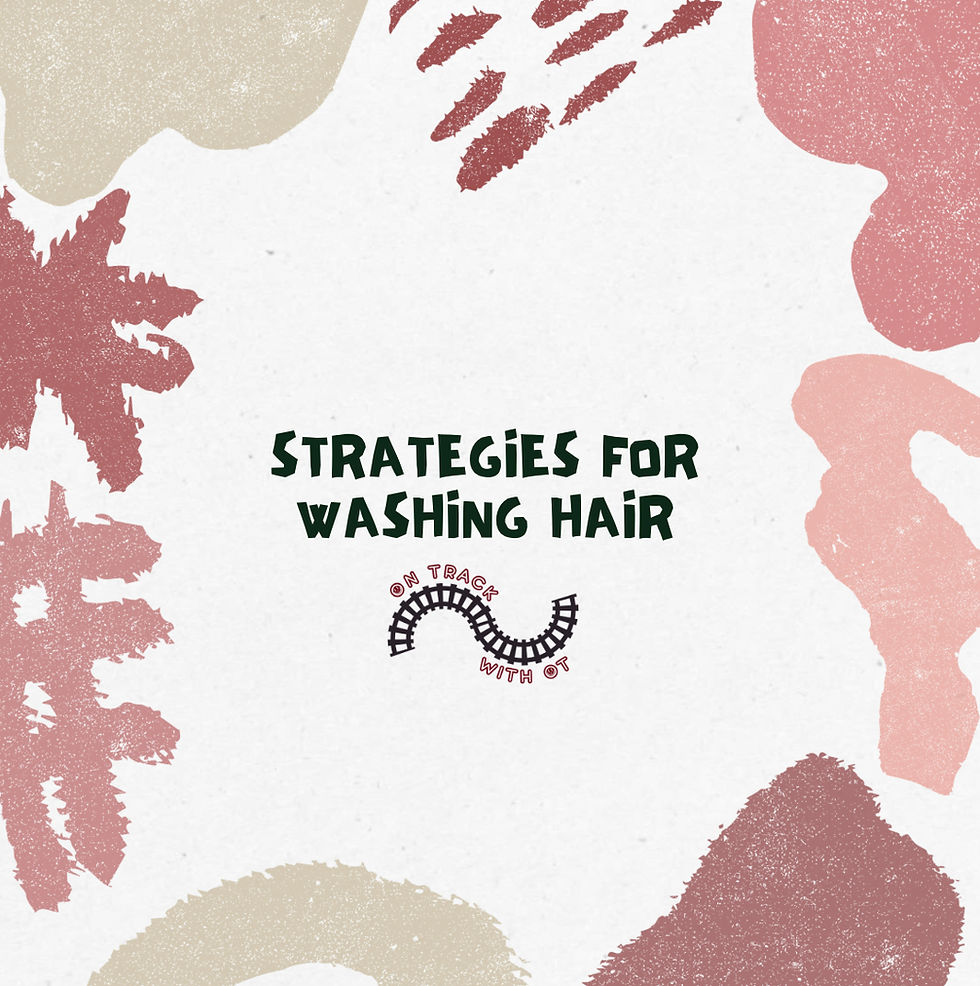Creating a Calm Down Corner for Kids
- ontrackwithot
- May 13, 2024
- 3 min read
This post contains affiliate links. This means I may earn a commission should you choose to make a purchase using my link.

Creating a calm down corner for a child can be a powerful tool to help them manage their emotions and find a sense of balance. Occupational therapists work with children to develop self-regulation skills, and a calm down box can play a pivotal role in this process. In this blog post, we'll explore how to make a calm down corner, what to include in it, and why having a designated calm space is essential for a child's emotional well-being.
The Importance of a Calm Space
Before we dive into creating a calm down corner, it’s important to understand why having a calm space is crucial for children. Our minds are often bombarded with a multitude of sensory experiences and emotions, which can be overwhelming. Having a designated calm space provides children with a safe and predictable environment where they can retreat to regain their composure and manage their emotions effectively.
Choose the Right Location:
The first step in establishing a calm space is to select an appropriate location. It should be a quiet, low-stimulation area within the child's living space, ideally away from distractions or loud noises. This area should feel inviting and comfortable, making it easy for the child to transition there when needed.
Create a Visual Barrier:
Visual cues can help children distinguish their calm space from the rest of the environment. You can consider using curtains, blankets, or colorful tape on the floor to create a clear boundary.
What to Include in a Calm Down Box
A calm down box is a great addition to a child's calm space, as it contains a variety of sensory tools and materials to help them self-regulate. Here are some essential items to include (I included examples with links to each, but you can get creative with the items that you use in yours!):
Sensory Objects: Provide items like stress balls, fidget toys, or textured objects to engage the child's senses and redirect their attention away from distressing thoughts or emotions.
Relaxation Tools: Include items like calming music, stress ball, or a toy with vibration to promote relaxation and reduce anxiety.
Breathing Exercises: Add visual aids or picture cards that illustrate deep breathing techniques. Encourage the child to practice these techniques when regulated to manage stress and anxiety effectively.
4 breathing activities are included in my calm down cards set!
Visual Calming Tools: Consider including a glitter jar, sensory bottles, bubbles, or a lava lamp to provide soothing visual stimuli. These can help children calm their minds and focus on something peaceful.
Sensory bottle: How to make a sensory bottle video and blog next week!
Comfort Items: Include a soft blanket, a favorite stuffed animal, or cozy headphones for comfort and security.
My son LOVES Bluey, so I included a Bluey pillow, blanket, and stuffed animal in his calm down corner.
Journal and Art Supplies: Provide a journal and art supplies, so the child can express their feelings and thoughts through drawing, writing, or coloring.
Calm Down Cards: Create a set of cards with coping strategies and emotion recognition activities. This can help the child identify their feelings and select appropriate techniques to manage them.
Making Faces: I got this book for my son (16 months) to help understand and identify different emotions. He has loved it so far and is starting to make facial expressions when he sees the different emotions.
A set of 12 Calm Down Cards are available for purchase on the products page. I printed a smaller version to keep in my purse to support regulation on the go!
Create a calm down corner with me in this video!
A calm down box, along with a dedicated calm space, can be a game-changer in helping children build self-regulation skills. It provides them with a safe, supportive environment where they can learn to manage their emotions effectively. From sensory tools to relaxation aids, the contents of the calm down box should cater to the child's unique needs and preferences. Encourage them to contribute to the box's contents, making it a collaborative and empowering experience.
Be on the look out for the next few blogs that will walk through some fun activities, crafts, and games to support emotional regulation and coping skills through FUN!




Comments